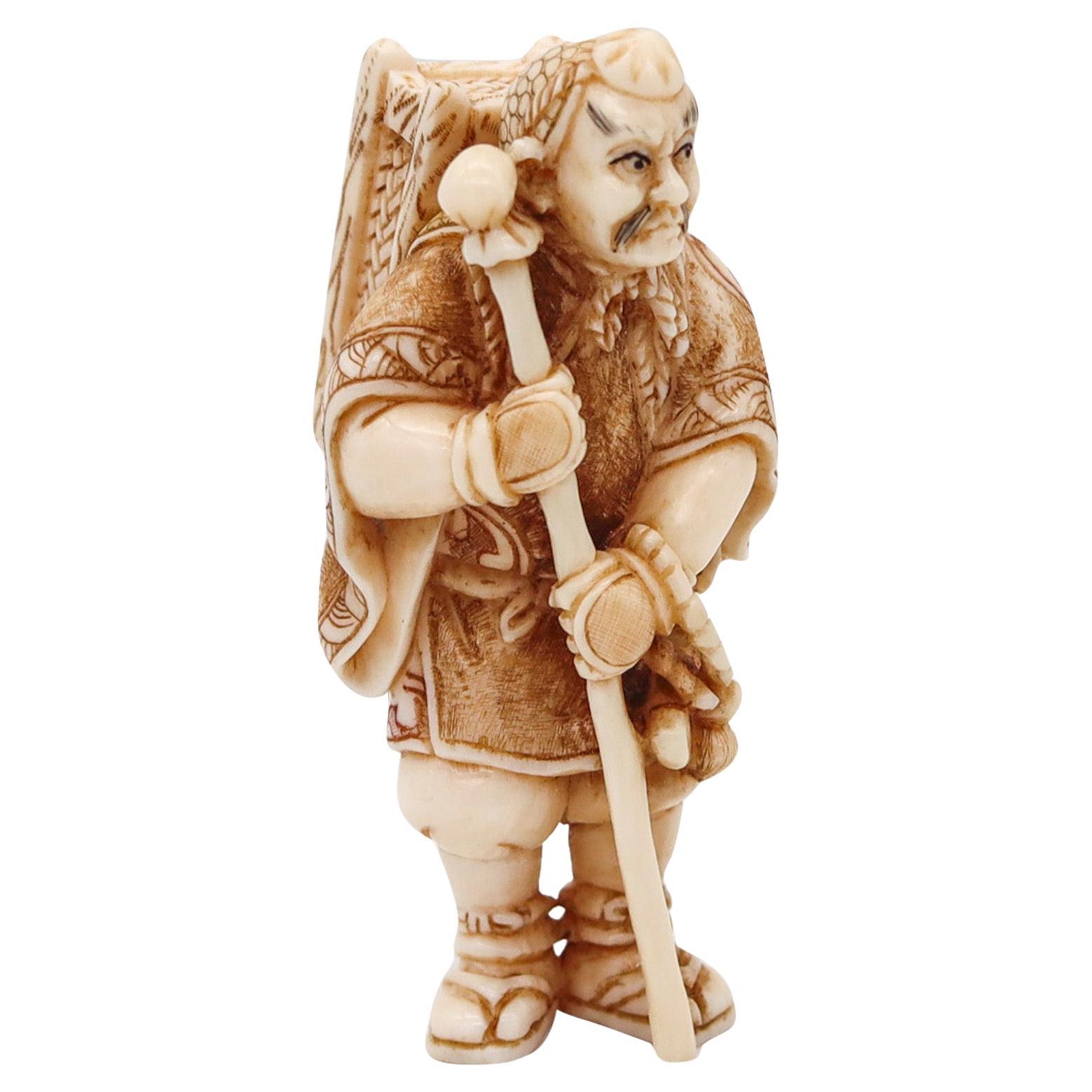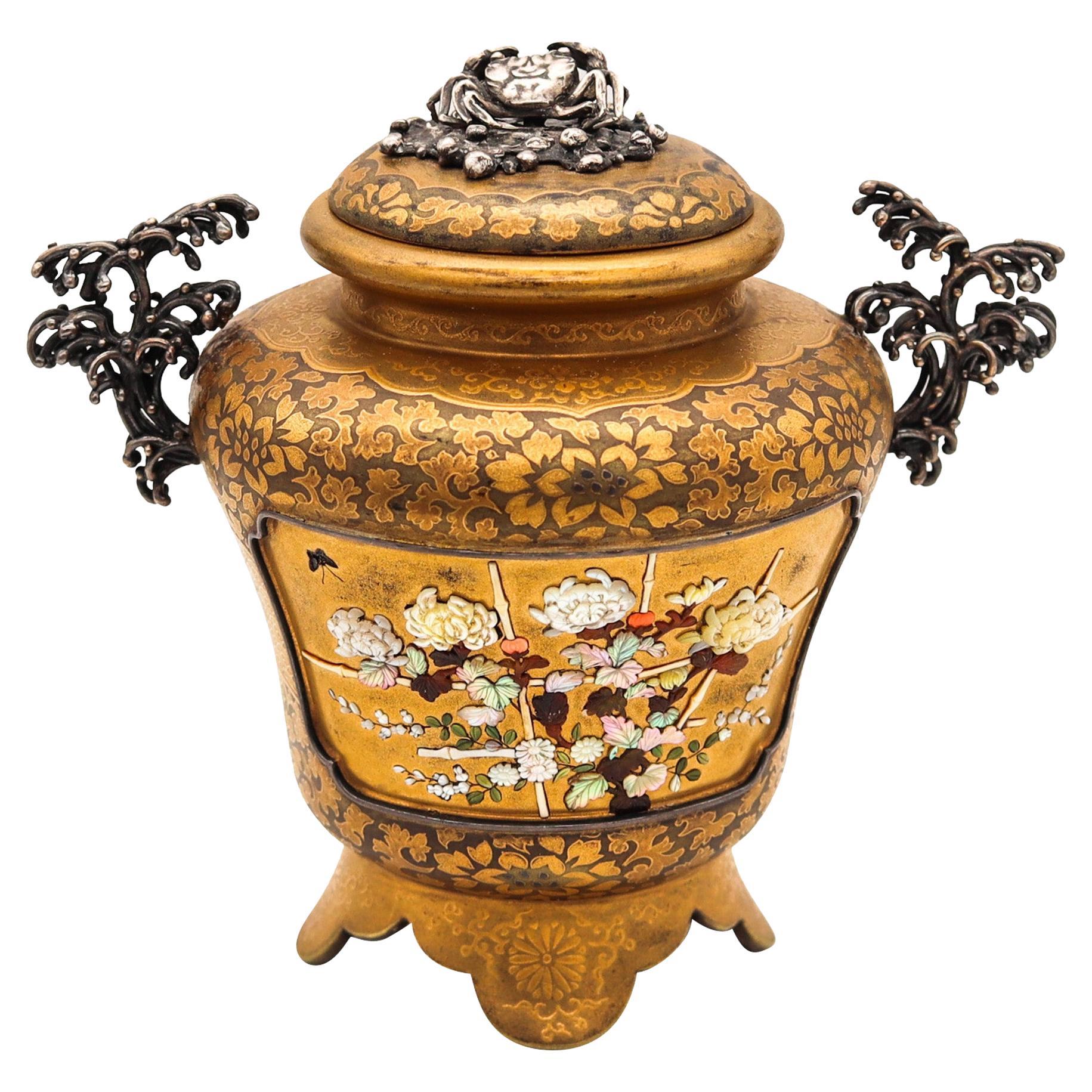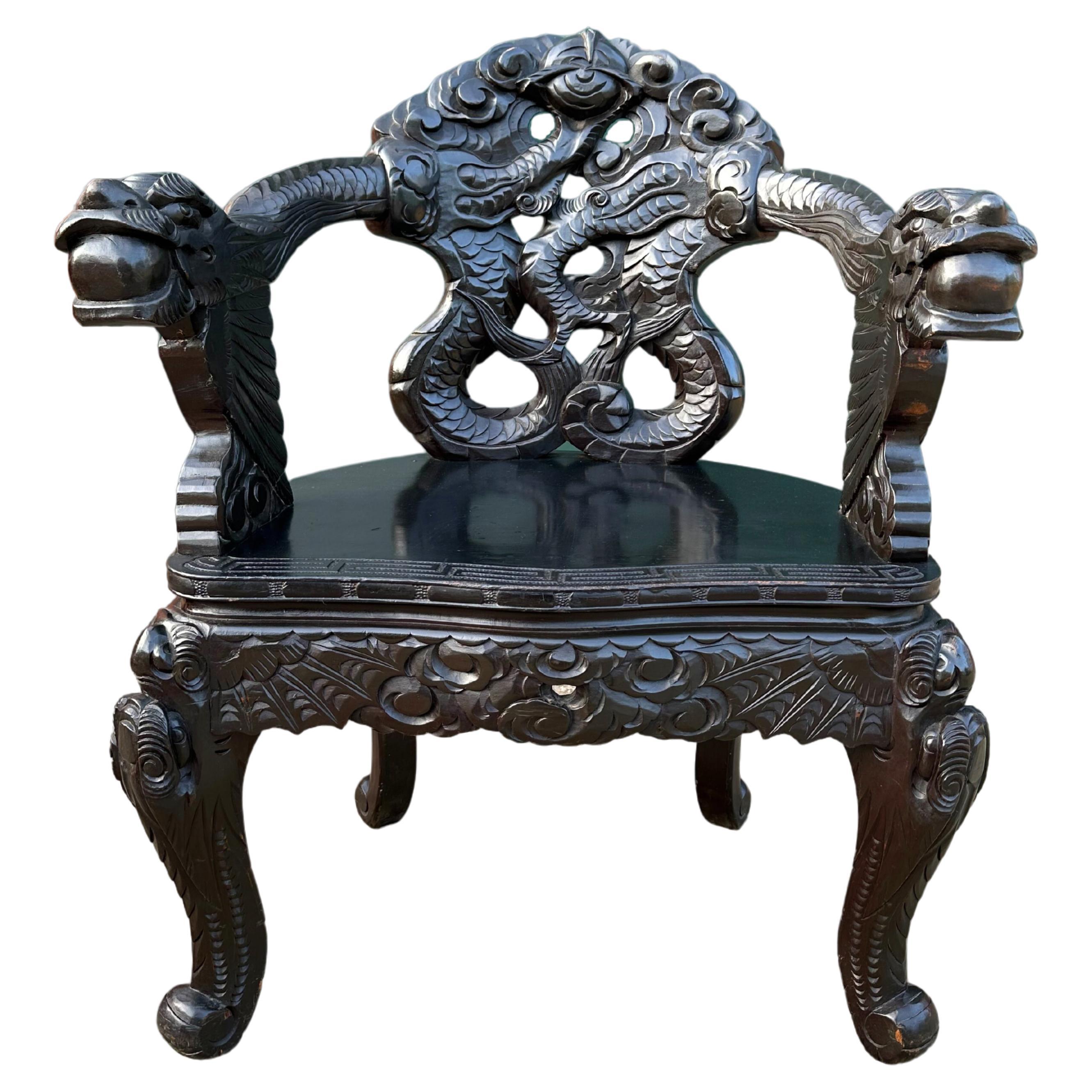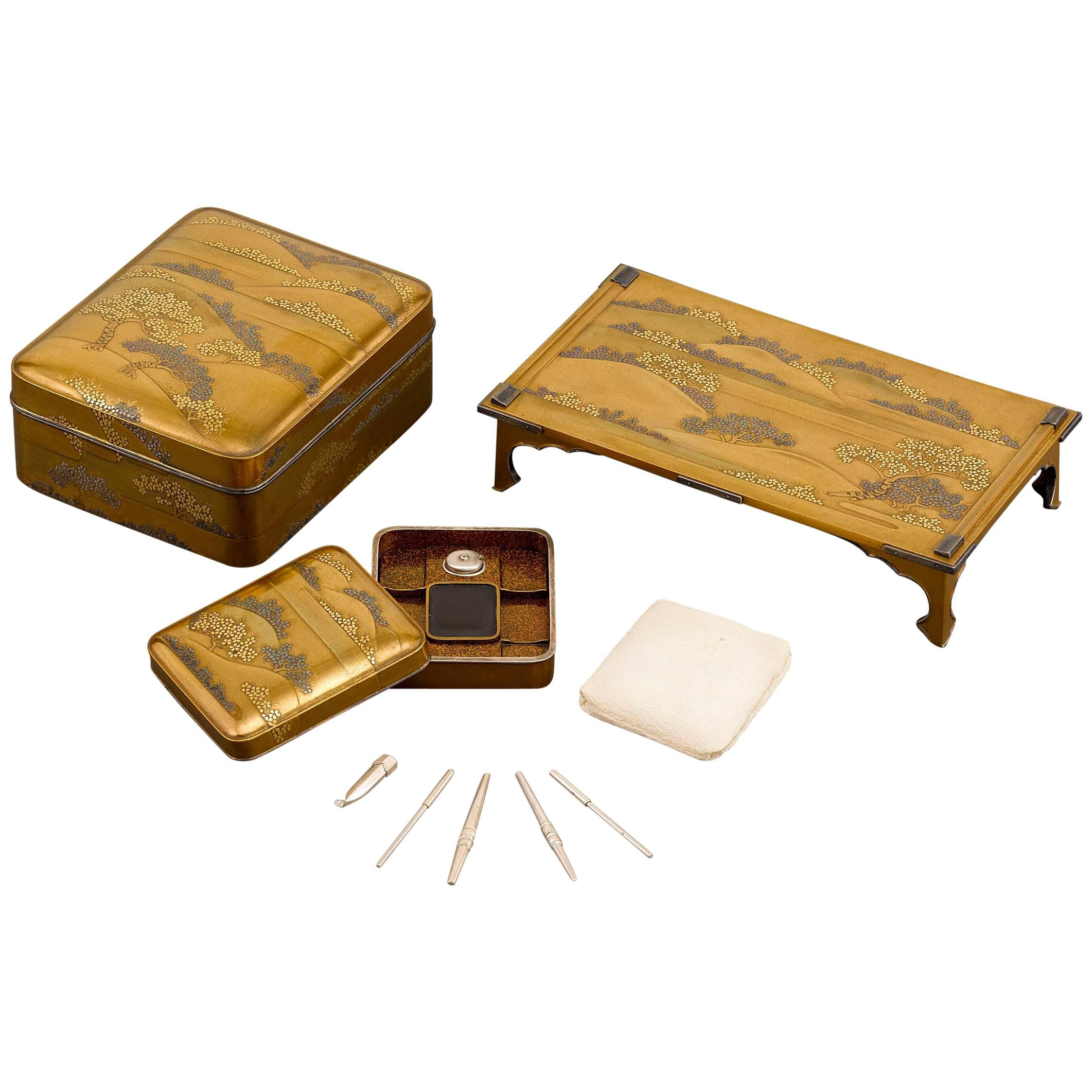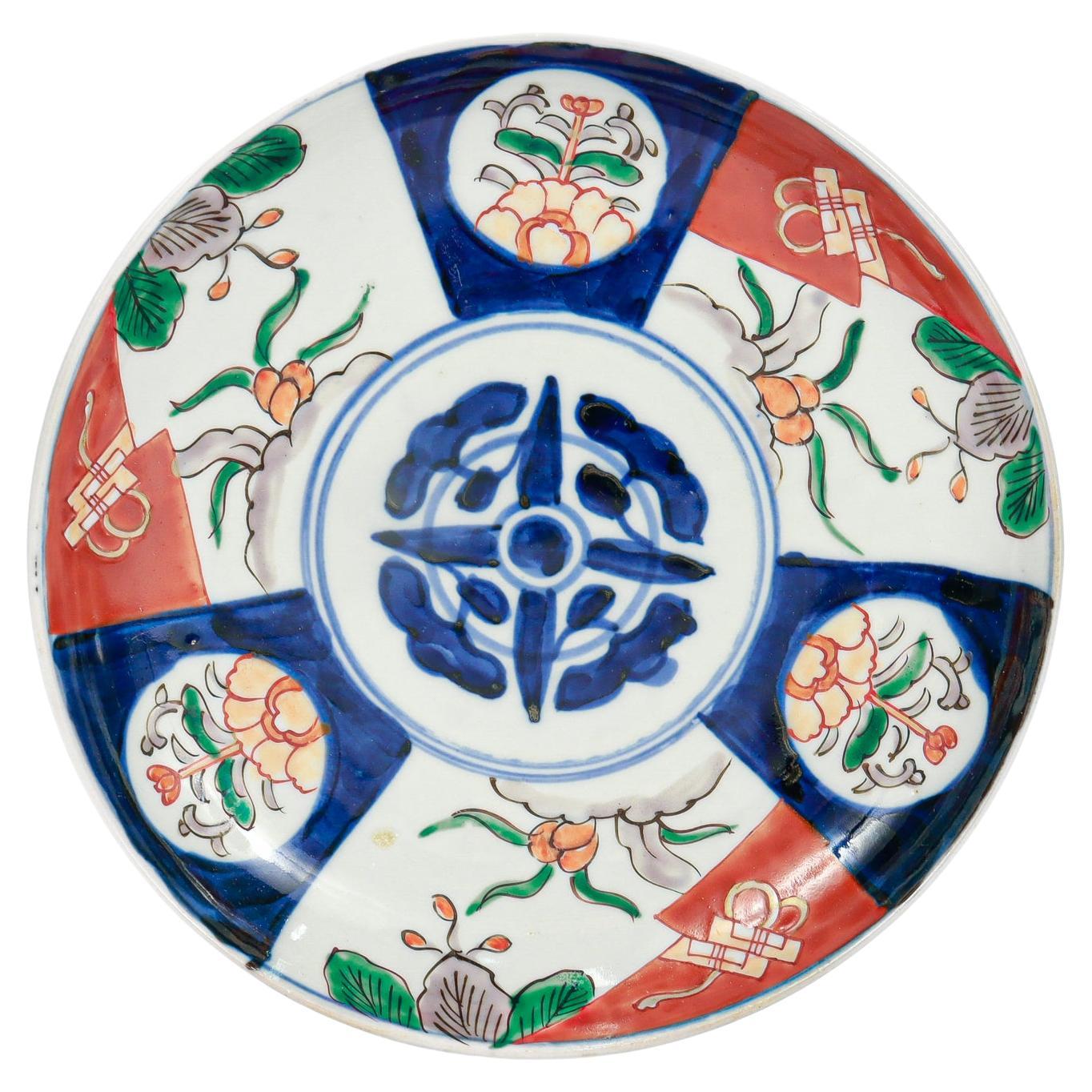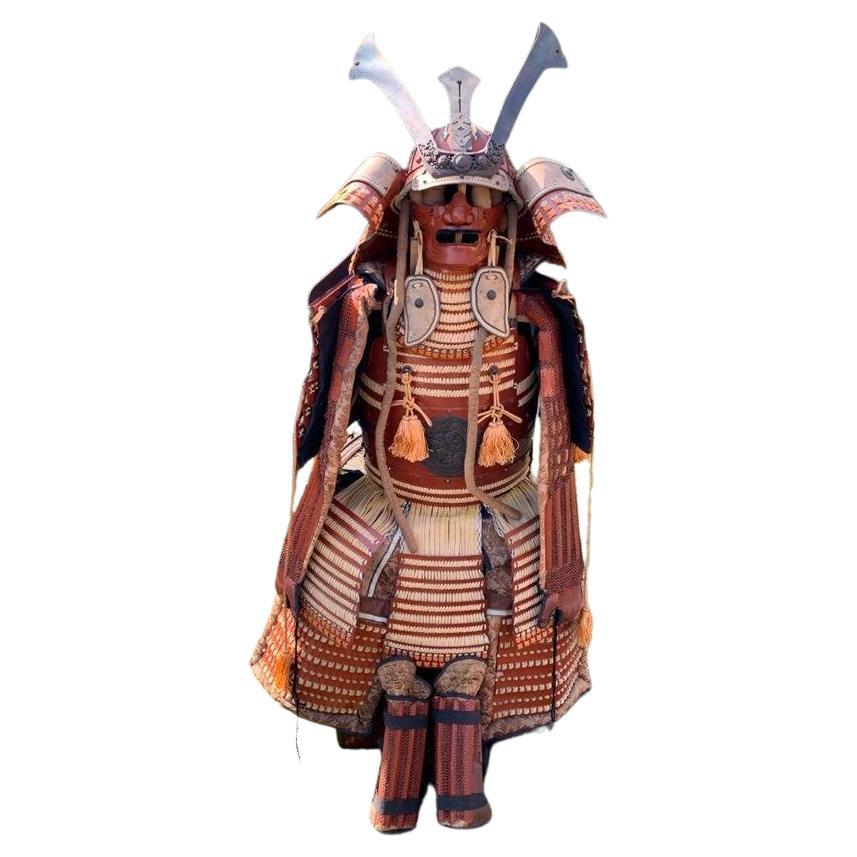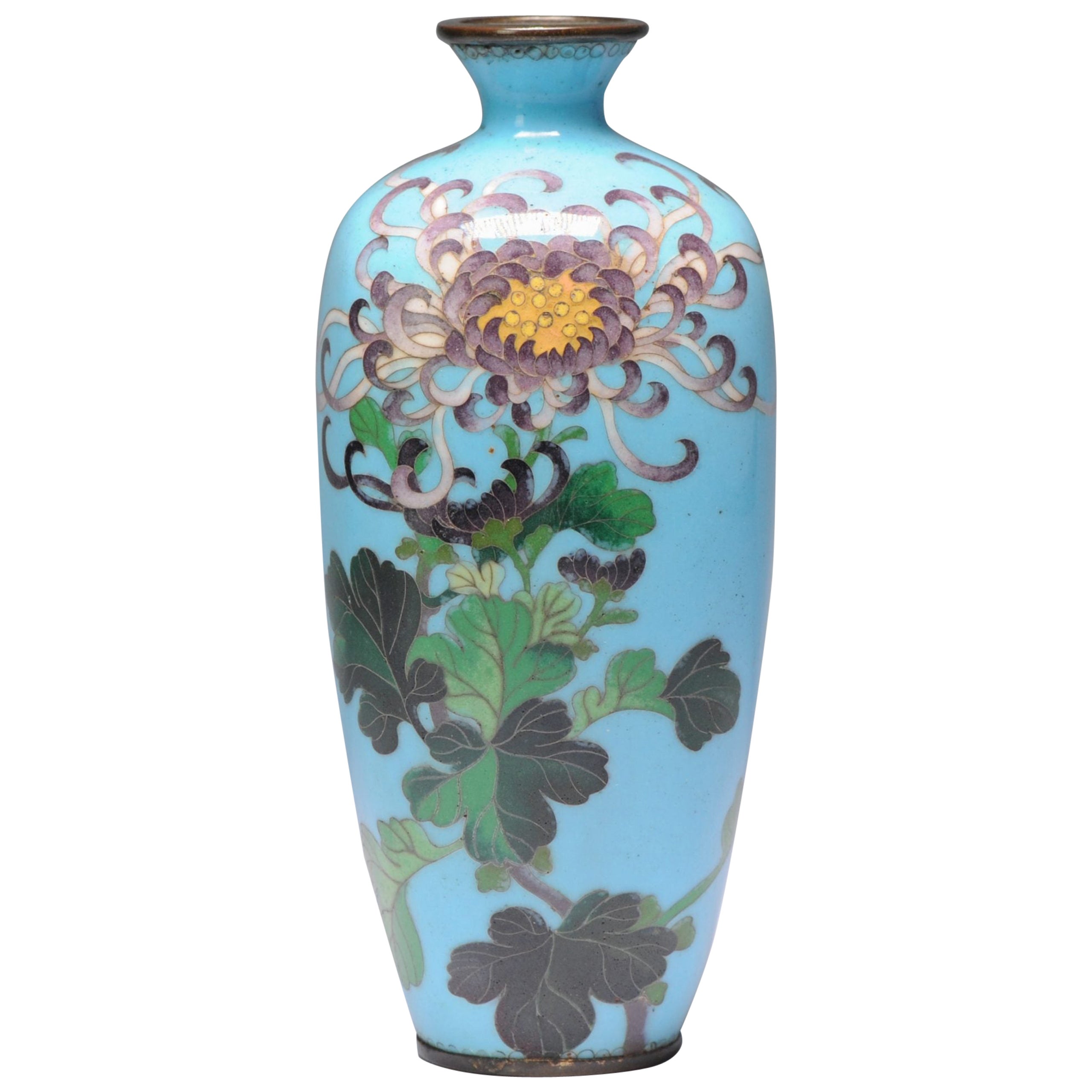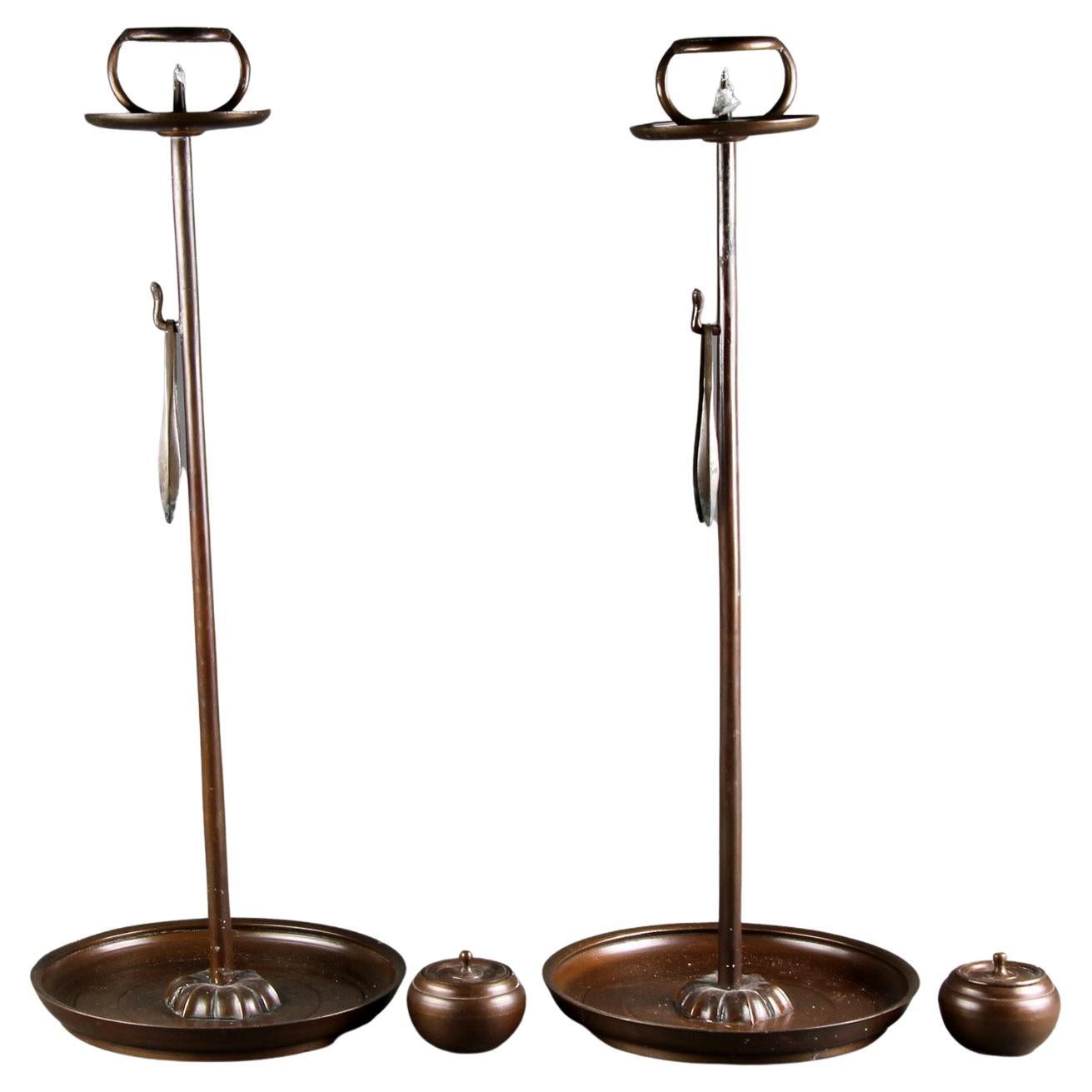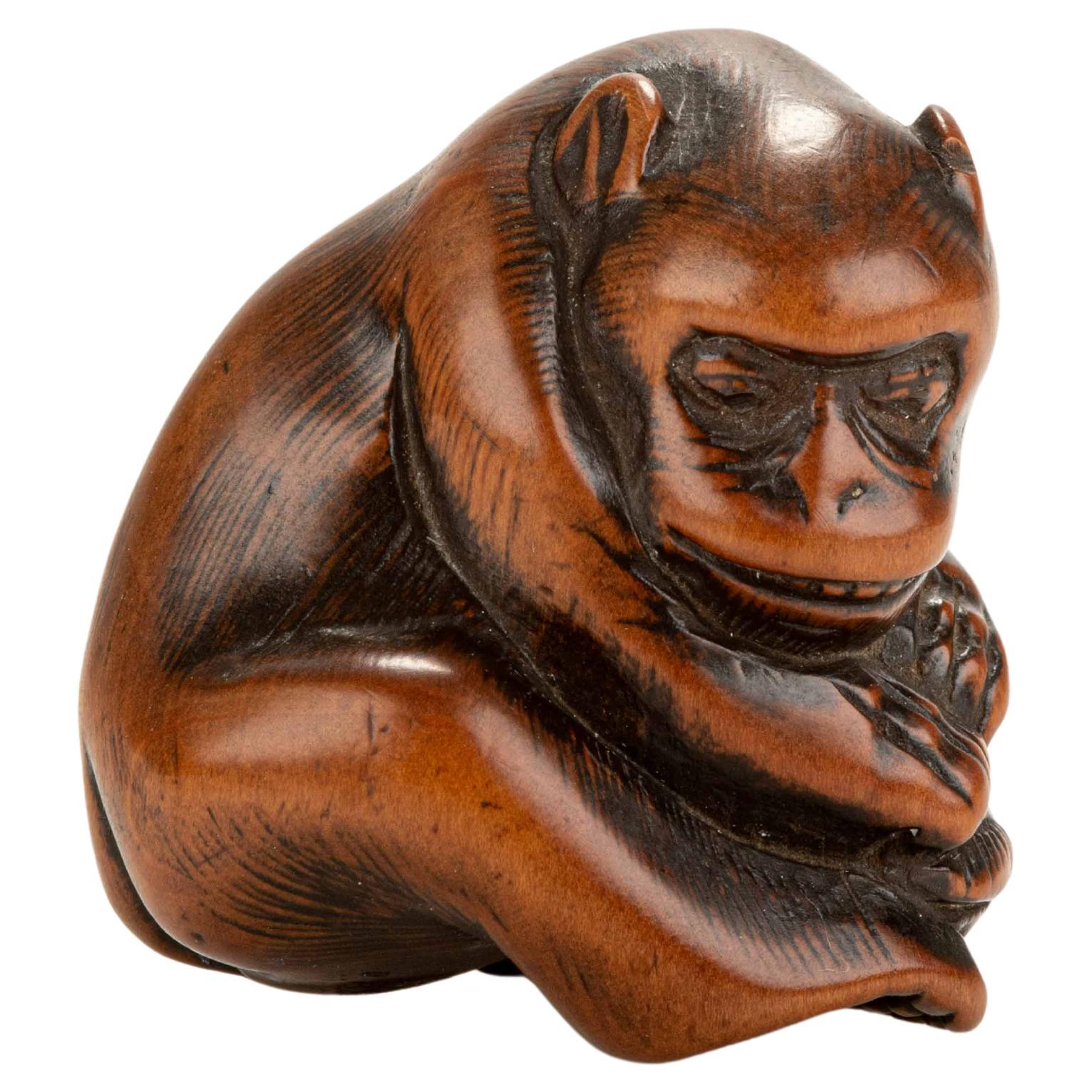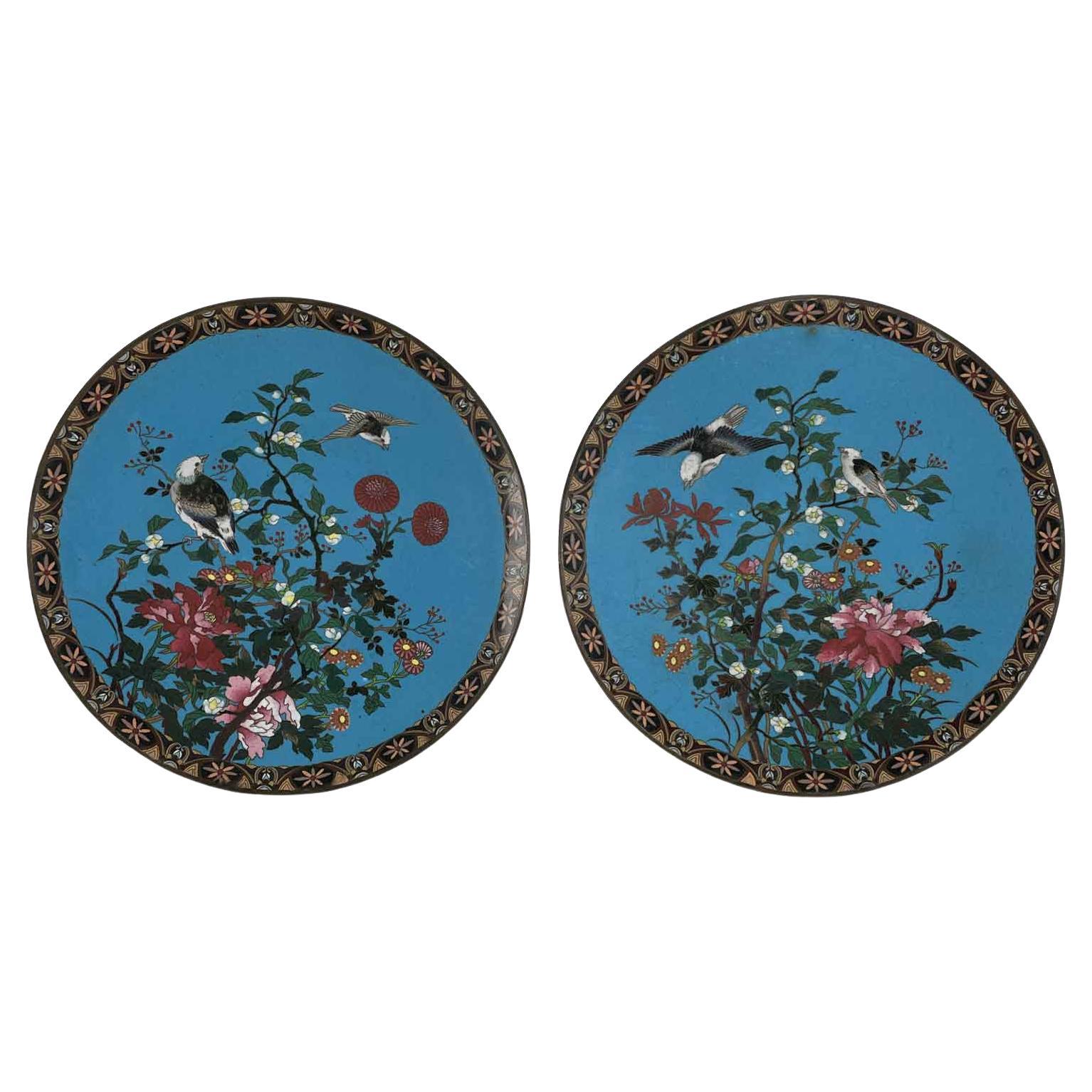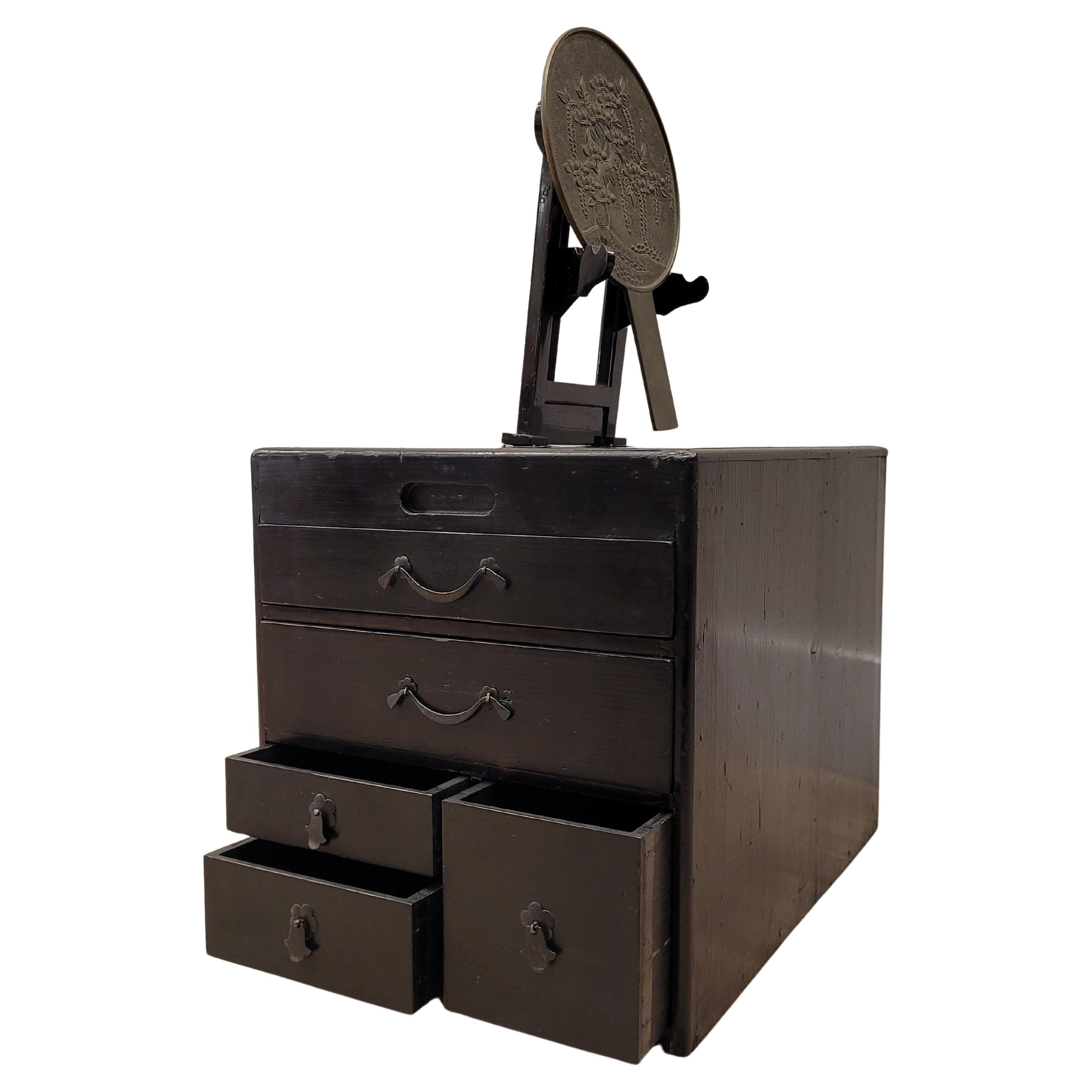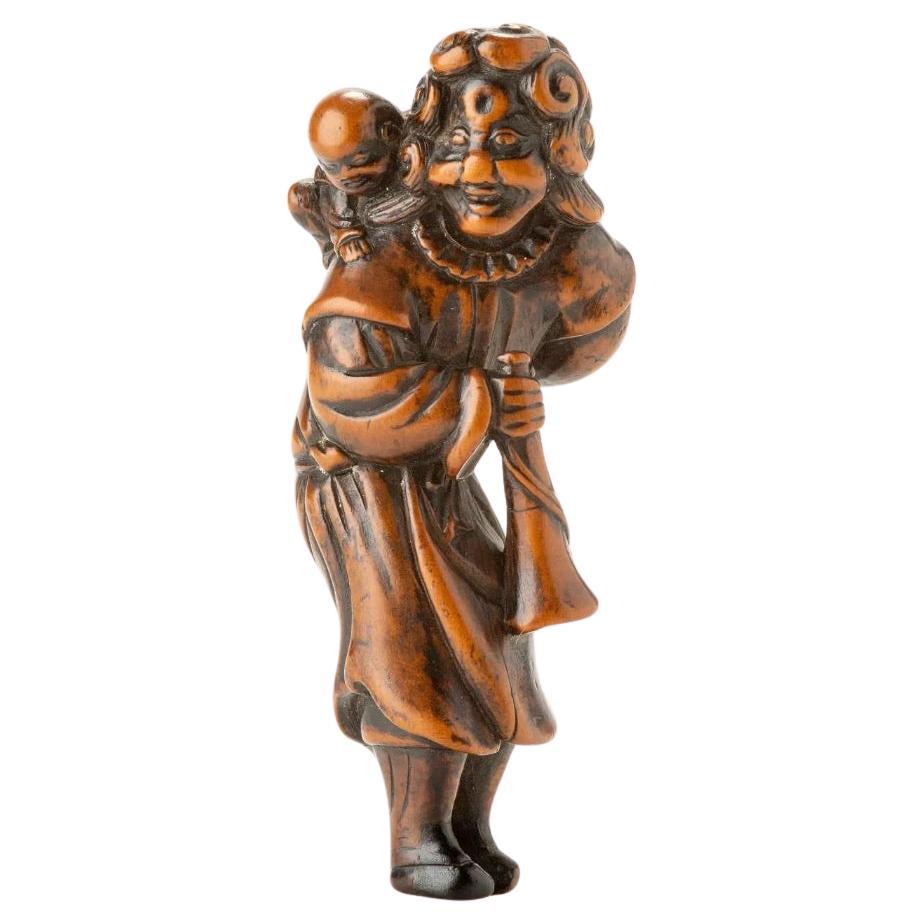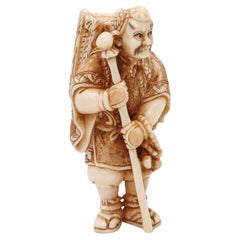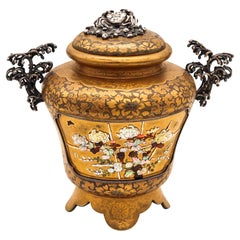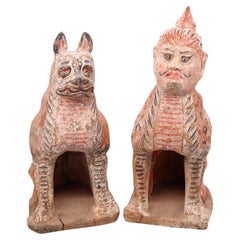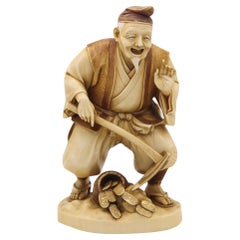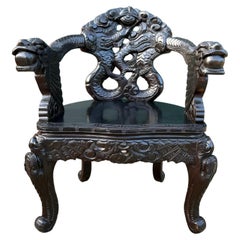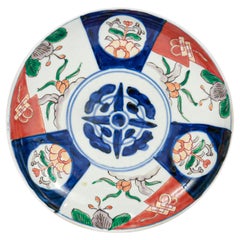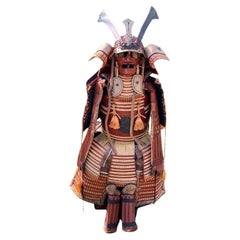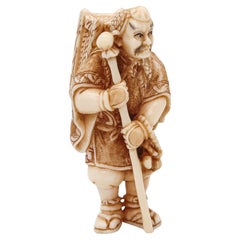
JAPAN 1890 Meiji Polychromate Netsuke Of a Yamabushi Carved In Ivory
View Similar Items
Want more images or videos?
Request additional images or videos from the seller
1 of 8
JAPAN 1890 Meiji Polychromate Netsuke Of a Yamabushi Carved In Ivory
About the Item
- Dimensions:Height: 0.8 in (2.01 cm)Width: 0.36 in (9.1 mm)Depth: 0.38 in (9.5 mm)
- Style:Meiji (Of the Period)
- Materials and Techniques:
- Place of Origin:
- Period:
- Date of Manufacture:1890
- Condition:Wear consistent with age and use. The overall condition of this netsuke is excellent. Beside the little normal wear, there is no damage and all parts are secured in their settings. This piece has been carefully inspected to guarantee the condition and authenticity.
- Seller Location:Miami, FL
- Reference Number:Seller: D070824ANAF/.11561stDibs: LU8303240693912
About the Seller
5.0
Platinum Seller
Premium sellers with a 4.7+ rating and 24-hour response times
1stDibs seller since 2023
194 sales on 1stDibs
Authenticity Guarantee
In the unlikely event there’s an issue with an item’s authenticity, contact us within 1 year for a full refund. DetailsMoney-Back Guarantee
If your item is not as described, is damaged in transit, or does not arrive, contact us within 7 days for a full refund. Details24-Hour Cancellation
You have a 24-hour grace period in which to reconsider your purchase, with no questions asked.Vetted Professional Sellers
Our world-class sellers must adhere to strict standards for service and quality, maintaining the integrity of our listings.Price-Match Guarantee
If you find that a seller listed the same item for a lower price elsewhere, we’ll match it.Trusted Global Delivery
Our best-in-class carrier network provides specialized shipping options worldwide, including custom delivery.More From This Seller
View AllJAPAN 1890 Meiji Sculptural Polychromate Netsuke Of a Yamabushi
Located in Miami, FL
Japanese Meiji period netsuke. of a Yamabushi.
This is an exceedingly beautiful and intricate carved netsuke, created during the imperial Japan in the Meiji period, back in he 1890....
Category
Antique 1890s Japanese Meiji Sculptures and Carvings
Materials
Bone
$978 Sale Price
30% Off
Japan 1890 Meiji Shibayama Round Urn in Gilded Wood and Sterling Silver
Located in Miami, FL
Shibayama urm from the Japan meiji (1858-1912) period.
Gorgeous piece of art, created in the imperial Japan during the Meiji period, circa 1890. This is a little urn with a lid crafted in gilded wood, shibayama panels and sterling silver. Composed by a four footed round vase with two sterling silver handles in the shape of trees and the lid on top accented with the figure of a crab in sterling silver. The gilded wood is decorated with flowers, sea patterns and the imperial flower...
Category
Antique 1890s Japanese Meiji Antiquities
Materials
Multi-gemstone, Gold, Silver, Sterling Silver, Gold Leaf
$4,889 Sale Price / set
30% Off
China 618-907 AD Tang Dynasty Pair Of Polychromate Earth Spirits Zhenmushou
Located in Miami, FL
Pair of Earths Spirits "Zhenmushou" from the China Tang Dynasty 618-907 AD.
A beautiful and rare pair of "Earths Spirits guardians" from the Yunnan province region in the ancient China. This was created in clay earthenware pottery during the Tang Dynasty period between 618 and 907 AD. Featuring the molded figures of two seated guardians with decorations with polychrome pigmentations. The figures are seated on their haunches with cloven hooves planted firmly on the base looking forward with their front legs in a straight position. Both with face and body alert expressions on a rectangular base.
Earth spirits usually appear in pairs, one with a human head and the other with a lion head. Their supernatural powers, indicated by antlers, spiky flanges and flames, enable them to confront evil spirits and protect any precincts within their gaze. Have been believed to protect the living by keeping the spirits of the dead from inappropriately roaming the world outside the tomb.
Zhenmushou or guardian deities, developed from a line of protective spirits found normally in pairs at the front of Tang dynasty tombs. They served both to protect the figure from untoward spirits, and the outside world from the roving spirit of the dead. Combining features from a number of animals to form the perfect mythic beast, these mythical creatures were perceived to be the ideal guardians of the dead
The semi human faced figure has a measures of 11.25 by 4.5 by 5.75 inches (28.57 x 11.43 x 14.60 Cm).
The mythological lion animal figure has a measures of 10 by 5 by 5.8 inches (24.5 x 12.7 x 14.73 Cm).
Tang dynasty or Tang Empire, was an imperial dynasty of China that ruled from 618 to 907, with an interregnum between 690 and 705. It was preceded by the Sui dynasty and followed by the Five Dynasties and Tend Kingdoms period. Historians generally regard the Tang as a high point in Chinese civilization, and a the golden age of cosmopolitan culture. Tang territory, acquired through the military campaigns of its early rulers, rivaled that of the Han dynasty.
The Li family founded the dynasty, seizing power during the decline and collapse of the Sui Empire and inaugurating a period of progress and stability in the first half of the dynasty's rule. The dynasty was formally interrupted during 690–705 when Empress Wu Zetian seized the throne, proclaiming the Wu Zhou dynasty...
Category
Antique 15th Century and Earlier Chinese Tang Antiquities
Materials
Earthenware, Pottery
$4,025 Sale Price / set
30% Off
JAPAN 1890 Meiji Carved Figure of Fortune God Daikoku As a Farmer With Coins
Located in Miami, FL
A Japanese carved sculpture of Daikoku.
Magnificent sculpture of the god of the fortune Daikoku WITH OVER 100 YEARS OLD, created in Japan during the Meiji period, circa 1890. The ca...
Category
Antique 1890s Japanese Meiji Sculptures and Carvings
Materials
Gold
$3,489 Sale Price
30% Off
JAPAN 1890 Meiji Period Okimono Sculpture Of A Group Of Skeletons Smoking
Located in Miami, FL
Sculptural signed Okimono from the Japanese Meiji period (1868-1912).
Very rare, unusual and large sculptural assembling of a dysplaying piece of okimono. Created in Japan during the imperial period of the Meiji (1868-1912). This extraordinary okimono was carefully carved depicting a group of three intricately and realistically rendered carousing skeletons (Gaikotsu) in relax and resting position, drinking and smoking. Two of them, probably males representations are resting on a wicker sofa. The third, is a woman seated in a lower stool...
Category
Antique 1890s Japanese Meiji Sculptures and Carvings
Materials
Wood, Lacquer
$13,989 Sale Price
30% Off
JAPAN 1890 Meiji Period Okimono Sculpture With A Group Of Skeletons Playing
Located in Miami, FL
A signed Okimono from the Japanese Meiji period (1868-1912).
Very rare, unusual and large sculptural assembling of a dysplaying piece of okimono. Created in Japan during the imperia...
Category
Antique 1890s Japanese Meiji Sculptures and Carvings
Materials
Wood, Lacquer
$13,989 Sale Price
30% Off
You May Also Like
Antique Japanese Export Meiji High Relief Dragon Carved Throne Chair.
Located in Nantwich, GB
An impressive Imperial Meiji period Japanese throne chair which is finely and lavishly carved with dragons holding the eternal pearl in their mouths.
...
Category
Early 20th Century Japanese Meiji Antiquities
Materials
Wood
Japanese Meiji Lacquer Writing Set
Located in New Orleans, LA
This remarkable Japanese portable writing set contains the instruments of sublime artistic expression. Also known as a yatate, this Meiji-period set i...
Category
Antique 19th Century Japanese Meiji Scholar's Objects
Materials
Stone
Antique Meiji Japanese Imari Plate
Located in Philadelphia, PA
A fine antique Japanese Imari plate.
With a white ground and decorated with geometric and floral devices in blues, reds, oranges, and oranges. The blue cross device to the middle is reminiscent of a shimazu mon.
The exterior of the rim has blue underglaze devices and accent lines to the footrim.
Simply a wonderful Meiji porcelain plate...
Category
Early 20th Century Japanese Meiji Antiquities
Materials
Porcelain
Japanese Red Samurai Armour Beginning of Meiji period 1900s
Located in Paris, FR
This is an armour of samurai. It was made around 1900s in Meiji era. This armour was not used in actual war so it was made as decoration, because of that, it is in good condition as its age.
There are some scratches and missing parts, if you need some more information, please let us know, we will respond you as soon as possible and send more photos.
This armour can be folded in a box. The box is getting damaged so it is not in good condition. We might send this armour in other box.
Dimensions: 50 x 50 x H170 cm
Scholars agree that Japanese armour first appeared in the 4th century, with the discovery of the cuirass and basic helmets in graves. During the Heian period, the unique Japanese samurai...
Category
Antique Early 1900s Japanese Meiji Antiquities
Materials
Metal, Iron
Antique Bronze Vase Cloisonné Japan Meiji 19th Century Japanese
Located in Amsterdam, Noord Holland
Absolute top Quality vase with superb decoration of flowers
Cloisonné is a way of enamelling an object, (typically made of copper) whereby fine wires are used to delineate the dec...
Category
Antique 19th Century Japanese Meiji Antiquities
Materials
Porcelain
$1,410 Sale Price
20% Off
A Japanese netsuke depicting a monkey with a turtle
Located in Milano, IT
Boxwood netsuke depicting a seated monkey stopping a turtle with its right paw.
Period: Edo 19th century
Dimensions: 4 x 3.2 x 3.8 cm.
Condition: Excellent condition.
Category
Antique 19th Century Japanese Japonisme Antiquities
Materials
Boxwood
Recently Viewed
View AllMore Ways To Browse
Antique Greek Or Roman Marble Bust
Porcelain Ceramic Planter Pot Or Vessel Vase Chinoiserie
Metz Walnut Night Stand Or Cabinet
Large Urns Or Pots
German Or Austrain Ech Bank Chairs
Dark Rattan Or Bamboo Book Case
Small Rattan Or Bamboo Desk
Our Lady Or Guadalupe Figurine
Tall Crystal Vases Or Pitchers
Our Lady Or Guadalupe
Stone Vases Guam Or Spain
Plaid Armchairs Or Swivel Chairs
Exterior Door Mahogany Or Walnut
Bamboo Or Wicker Chairs
Vintage Porcelain Or Bisque Celadon Hand Painted Cherubs Lamps
Wicker Or Rattan Clam Chairs
Chinese Temple Or Garden Doors
Narrow Small Credenza Or Sideboard
